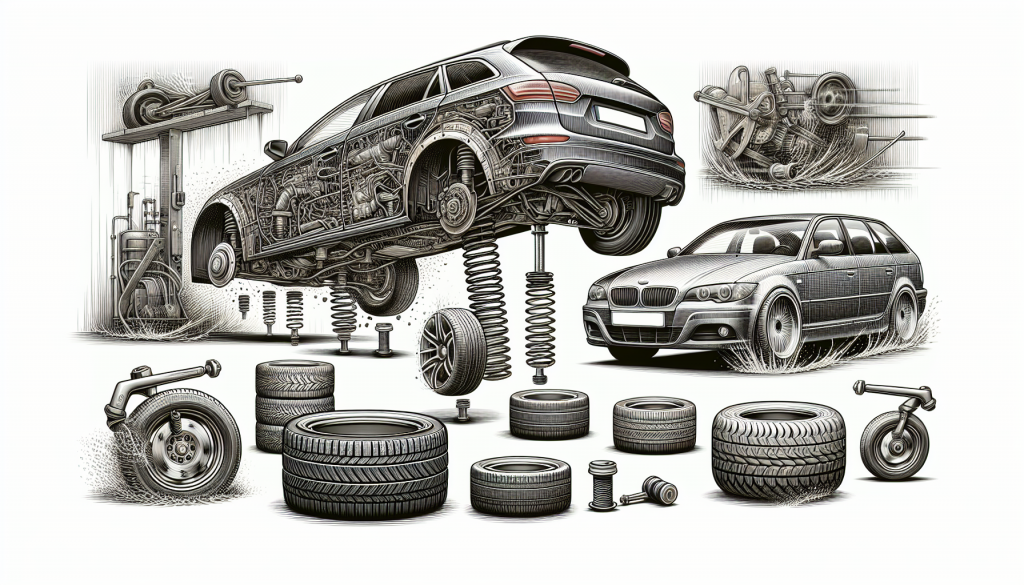Understanding Common Suspension Issues
Keeping your car’s suspension in check is like giving it a spa day—regular TLC keeps everything running smoothly and prevents those annoying bumps in the road.
Why Regular Check-Ups Matter
Think of regular inspections as your car’s routine doctor visits. They catch the little things before they become big, expensive problems. Spotting early signs of wear and tear in your suspension can save you from poor handling, uneven tire wear, and a bumpy ride. Stick to a schedule, and your car will thank you.
| How Often | What to Check |
|---|---|
| Every 6 months | Tire tread depth, alignment |
| Every 12 months | Shock absorbers, struts, ball joints |
| Every 24 months | Control arms, bushings, sway bars |
Want more tips on keeping your suspension in top shape? Check out our suspension system maintenance guide.
The Magic of High-Tech Tools
Diagnosing suspension issues without the right tools is like trying to find a needle in a haystack. High-precision gadgets help mechanics spot problems that aren’t obvious. These advanced tools measure alignment angles, check for worn parts, and make sure everything’s working as it should.
Here’s what the pros use:
- Alignment Machines: Measure camber, caster, and toe angles.
- Shock Absorber Testers: Check the health of your shock absorbers.
- Ball Joint Testers: Look for wear in ball joints.
Using these tools means problems get fixed fast, preventing further damage. Curious about the tech behind suspension checks? Dive into our suspension alignment tools article.
Regular check-ups and the right tools keep your suspension in tip-top shape, ensuring a smooth and safe ride. Want to know more about fixing suspension issues? Head over to our guide on correcting suspension problems and keep your car cruising smoothly.
Fixing Suspension Problems
Got a bumpy ride? Let’s smooth things out. Here’s how to tackle those pesky suspension issues and keep your car cruising like a dream.
Tweaking Camber, Caster, and Toe
First up, let’s talk alignment. Camber, caster, and toe are the holy trinity of wheel alignment. Camber is the tilt of your wheels, caster is the angle of your steering pivot, and toe is the direction your tires point. Get these right, and you’ll save your tires from wearing out too soon and keep your car handling like a champ.
| Adjustment | What It Is | Why It Matters |
|---|---|---|
| Camber | Tilt of the wheels | Affects tire wear and handling |
| Caster | Steering pivot angle | Keeps steering stable |
| Toe | Direction tires point | Impacts tire wear and straight-line stability |
Hitting the Road After Alignment
Once you’ve got your wheels aligned, take your car for a spin. This road test will show if everything’s in order. Look out for smooth steering, straight-line stability, and no weird vibrations.
Checking Alignment with New Tires
Got new tires? Congrats! But don’t forget to check your alignment. Misaligned wheels can chew up those fresh tires faster than you can say “alignment.” Save yourself the headache and the cash by getting it checked.
Keeping Technicians in the Loop
Tech changes fast, and so should your techs. Regular training on the latest alignment gear ensures they know their stuff and can fix your ride right. Trust me, you want someone who’s up-to-date.
Schooling Customers on Alignment
Most folks don’t think about alignment until it’s too late. Educate your customers on why regular checks are a must. Proper alignment means longer-lasting tires and better handling, which means more money in their pockets.
Seasonal Tweaks
Seasons change, and so do road conditions. Adjusting your alignment with the seasons keeps your car in tip-top shape all year round. Don’t let winter potholes or summer heat mess with your ride.
Watching Tire Wear
Keep an eye on your tires. Uneven or rapid wear can be a red flag for alignment issues. Regular checks can catch problems early and save you from bigger repairs down the road.
Fixing Suspension Problems
When suspension issues pop up, don’t wait. Use precise diagnostic tools and a methodical approach to get things back in order. Quick fixes now can prevent major headaches later.
By following these tips, you’ll keep your suspension in great shape and enjoy a smoother, safer ride. Happy driving!



